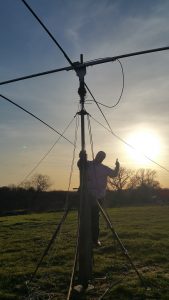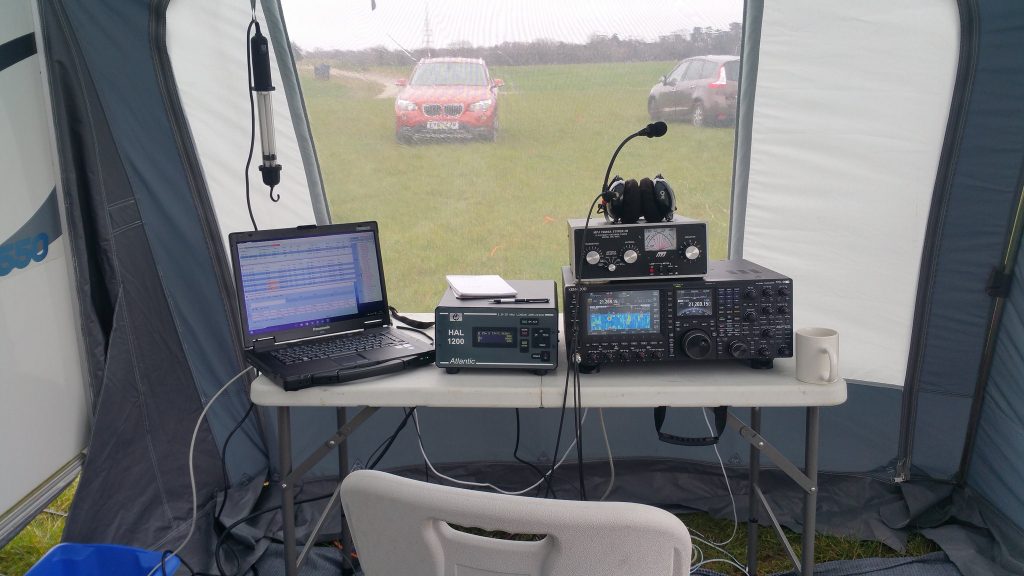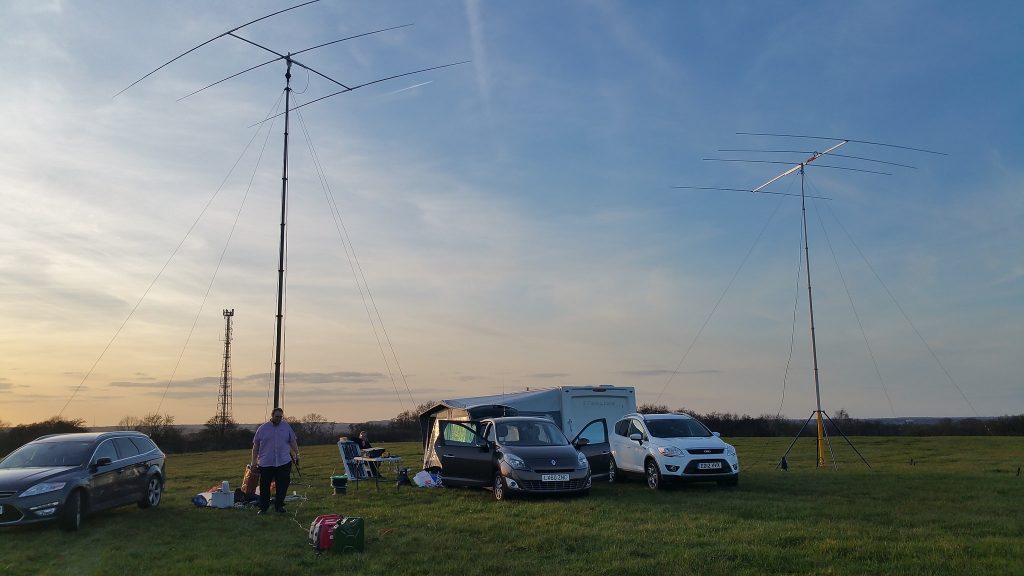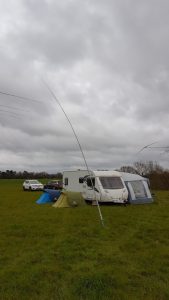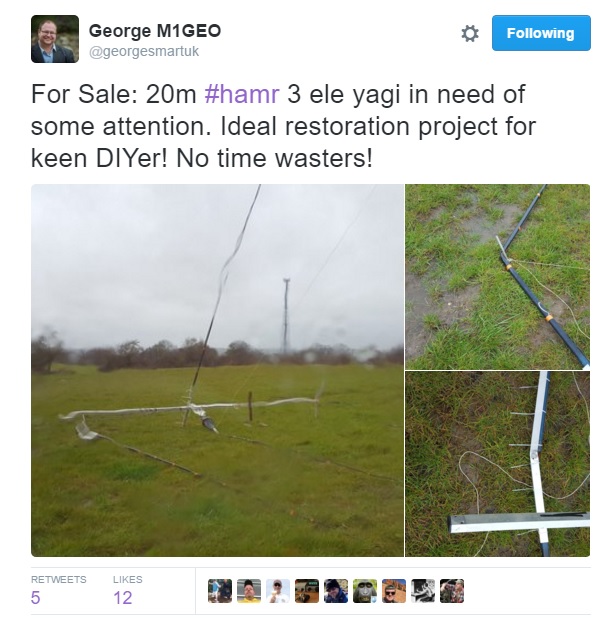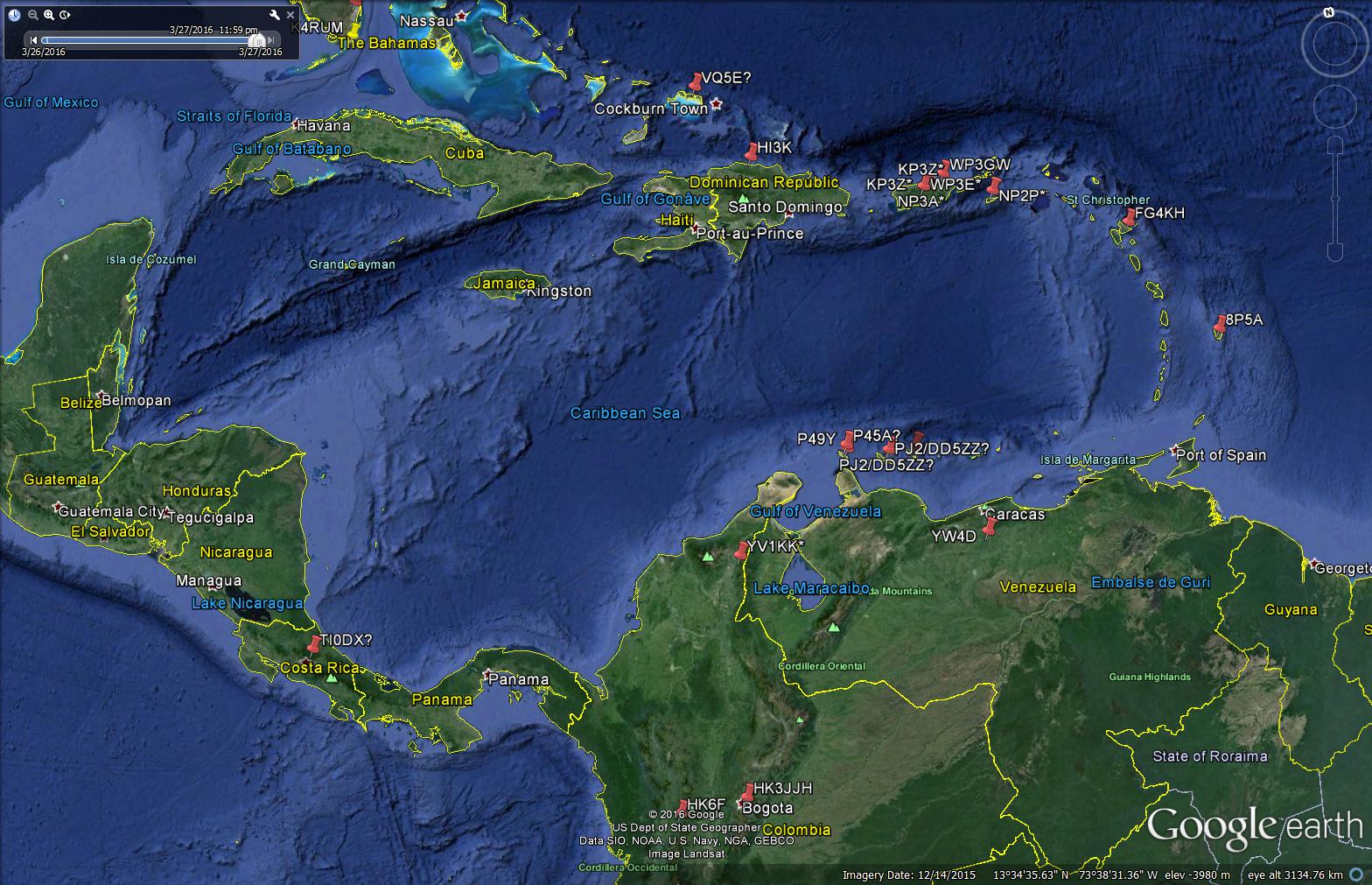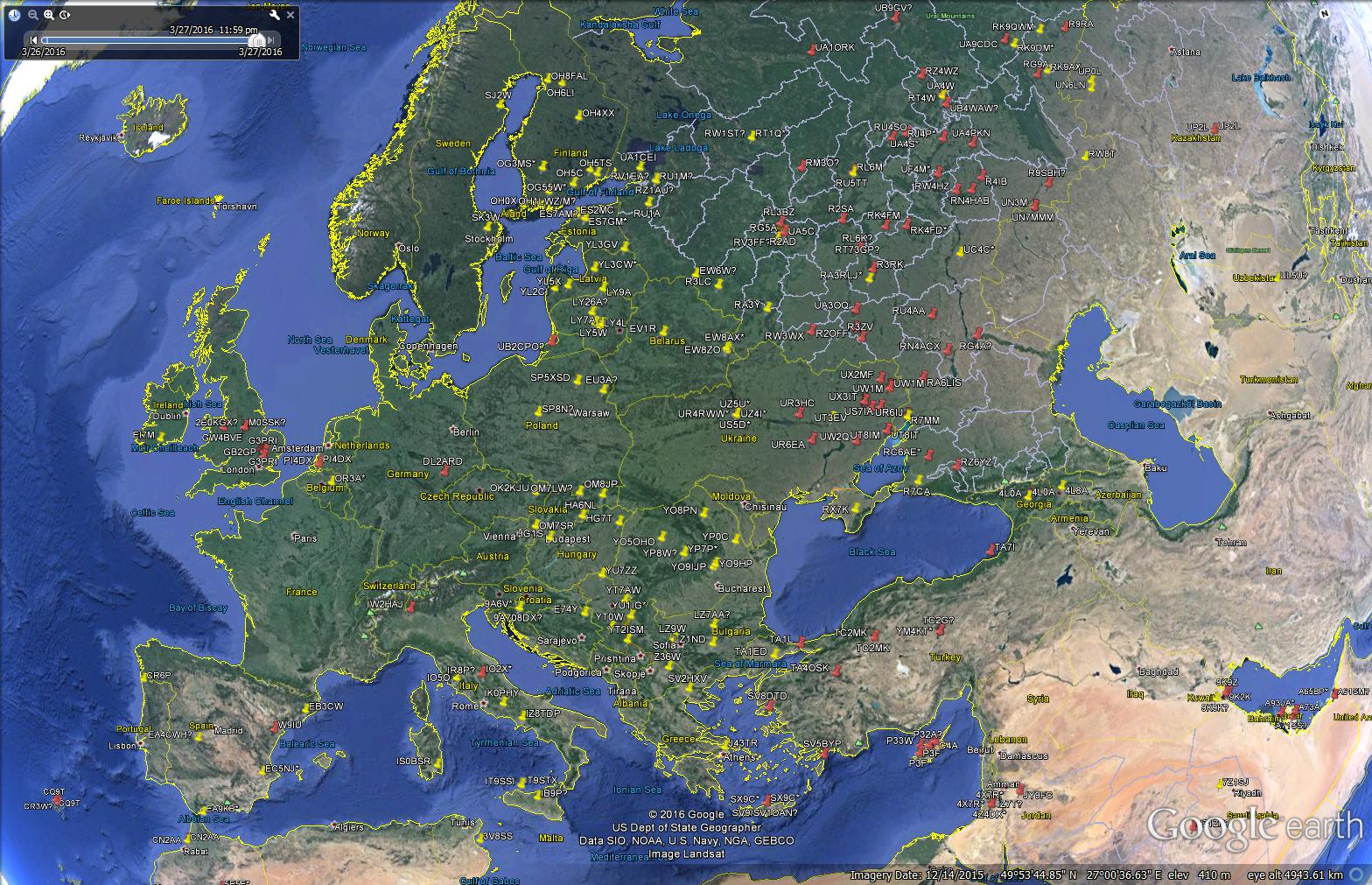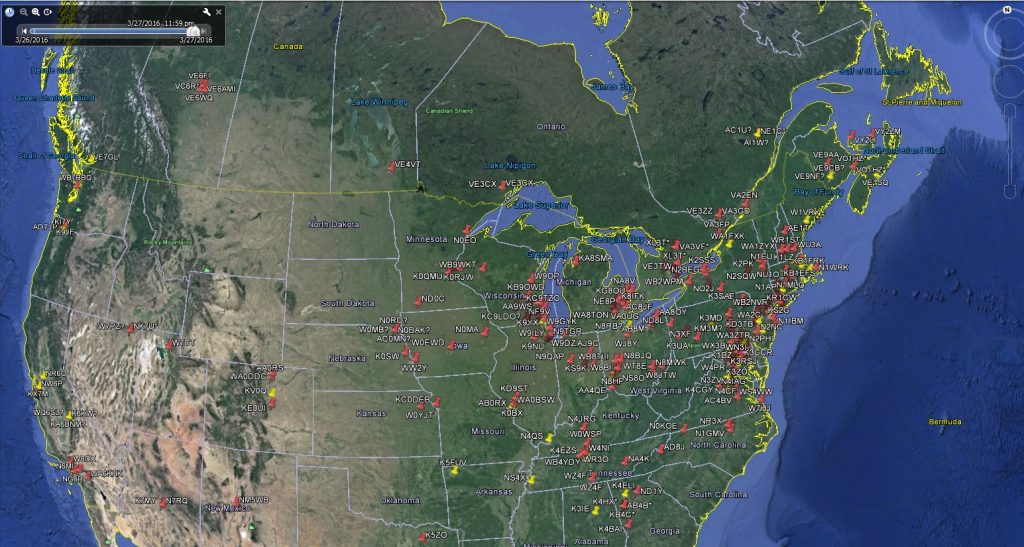Over the 2016 Easter public holiday weekend, the team at the SNBCG decided to participate in the CQWW WPX SSB contest, using the club callsign MX0SNB. On arrival, our usual camp location close to the bunker’s communication mast had become unusable due to recent wet weather, with the grass boggy to say the least! It soon became apparent one of the vehicles was stuck in the mud, and after much pushing and pulling we decided another location would be required. Luckily the owner of the site offered us another location, higher up on the hill with the added advantage “that once onto the hill your vehicle only need to slide down to the bottom of the hill to exit” – a very useful feature!
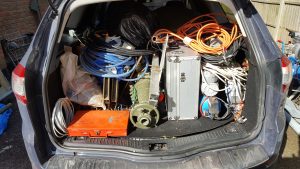 |
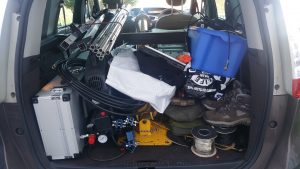 |
Using George M1GEO‘s 14 MHz homebrew beam and Dave M0TAZ‘s 21 MHz beam, we set up our stations on a lovely sunny Friday afternoon.
Power was provided by 2 x Honda EU20 generators coupled together and providing 4 kW of peak-power. Enough to run the two stations with amplifiers and a kettle for making tea!
Dave M0YOL kindly offered his awning, along with copious cups of tea, bacon sandwiches and supplies throughout the event. We had completed the set up before sun down on Friday, allowing us to complete some testing with both of the solid state amplifiers.George M1GEO and Chris G8OCV had recently purchased an SPE Expert 1.3K-FA amplifier and Dave M0TAZ was using the hal1200_atlantic, with both amplifiers are capable of providing over 1kW of RF power, more than enough to meet the UK full legal power of 400W.
George M1GEO and Chris G8OCV have designed and built a 3 element 14 MHz beam, the design uses roach poles and provides a lightweight portable beam. The 21 MHz beam Dave M0TAZ constructed was based on DK7ZB design, and the construction details have been previously discussed in this article on his personal website.
The set up inside the caravan (trailer) awning provided a dry and largely windproof operating position, although at this early in the year the evenings are somewhat chilly! The weather provided a real challenge as the weekend progressed. In such a high and exposed location, with storm ‘Katie’ approaching the south of the UK.
Over the course of the next 48 hours, the rain and the wind increased to storm force with gusts in London of 50 mph, and in our exposed hilltop location gusts in excess of 70 mph were felt rocking the caravan.
This video, comprised to clips from throughout the weekend captures the more sane parts of the experience, with the scary parts unrecorded (because we were all too busy holding things down)!
We lowered the beams and continued as best as possible using a vertical and doublet antenna – well, it started vertical!
Late on Sunday night and in early hours of Monday morning, the storm really hit had, the awning was in danger of parting from the caravan so the decision was taken to quickly move all the equipment into the safety of the caravan. It wasn’t until the following morning, when the storm had passed, that we were able to assess the damage!
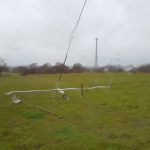 |
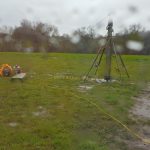 |
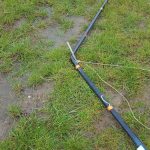 |
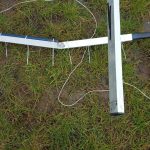 |
Unfortunately the beam is not likely to make any further field days, but George M1GEO and Chris G8OCV do have plans for a mark 2 aluminium version soon.
Dave M0TAZ‘s 21 MHz beam fared a little better with the weather and survived the storm, but unfortunately, the mast will require a new guide rail (a plastic wedge that stops the mast rotating) due to the wind loading put upon the mast in the storm.
Despite the awful weather conditions we did manage to work 744 QSO in 94 DXCC in the main on 14 and 21 MHz.
The following maps show QSO made on 21 MHz (Red pins) and 14 MHz (Yellow pins) showing North America, South America and Asia.
You can view the log and further statistics online using the excellent SH5 contest log analyser software.
